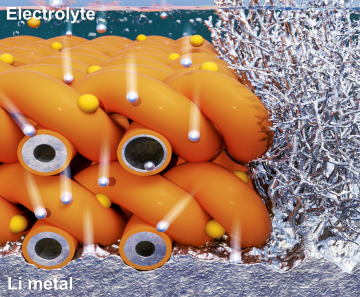KAIST
BREAKTHROUGHS
Research Webzine of the KAIST College of Engineering since 2014
Spring 2025 Vol. 24Now you can see floral scents!
Optical interferometry visualizes how often a lily emits volatile organic compounds (VOCs) (here, referred to as floral scents). We find that lily flowers emit volatile compounds discontinuously, with pulses observed approximately every 10 to 50 min.
Article | Fall 2022
In nature, plants have been evolving for hundreds of millions of years. It has been reported that the interactions between flowers, pollinators, and enemies are seemingly important if attempting to understand the ecological evolution of plants. In fact, flowers emit a bouquet of volatiles to attract pollinators or to protect flowers from pathogen and herbivore attacks. However, little is known about how often flowers emit volatiles. Researchers led by Hyoungsoo Kim, a professor from the Department of Mechanical Engineering at KAIST with co-leader Prof. Professor Sang-Gyu Kim from the Department of Biological Sciences directly measured the emission frequency of the lily’s floral scent using an optical interferometry technique.
To date, due to the lack of measurement techniques, previous works have only focused on the identification or quantification of floral volatiles. In this work, to visualize the floral scent, they monitored the signal of the refractive index difference between the lily’s volatile organic compounds (VOCs) and ambient air. The Mach-Zehnder interferometry system used to do this enabled measurements of the time-dependent accumulation of volatile vapors in a confined chamber. From this, the time-dependent emission rate of the lily’s scents was successfully detected and each flower’s temporal power spectrum could be obtained. Test samples (i.e., lily flowers) were randomly selected. The results indicate that the lily releases floral scents randomly. It was also found that the VOCs’ emission signals temporally disappear, suggesting that the lily either stops or decelerates its release. Second, the results show that each flower may have a unique footprint of the temporal power spectra. Although each flower may differ according to its genotype and/or growth condition, the rate of emission was found to be less than 1 h in all lilies.
To determine the exact reason for the irregular floral scent emission, it is necessary to consider certain biological features. Nonetheless, the current measurement results can offer new insight by which to understand and investigate in more depth the biosynthesis and emission mechanisms of floral volatiles.
This research was supported by the Basic Science Research Program through the National Research Foundation of Korea (NRF-2021R1A2C2007835), by the Rural Development Administration (PJ016403), and by the KAIST-funded Global Singularity Research PREP Program.
Most Popular

When and why do graph neural networks become powerful?
Read more
Smart Warnings: LLM-enabled personalized driver assistance
Read more
Extending the lifespan of next-generation lithium metal batteries with water
Read more
Professor Ki-Uk Kyung’s research team develops soft shape-morphing actuator capable of rapid 3D transformations
Read more
Oxynizer: Non-electric oxygen generator for developing countries
Read more
